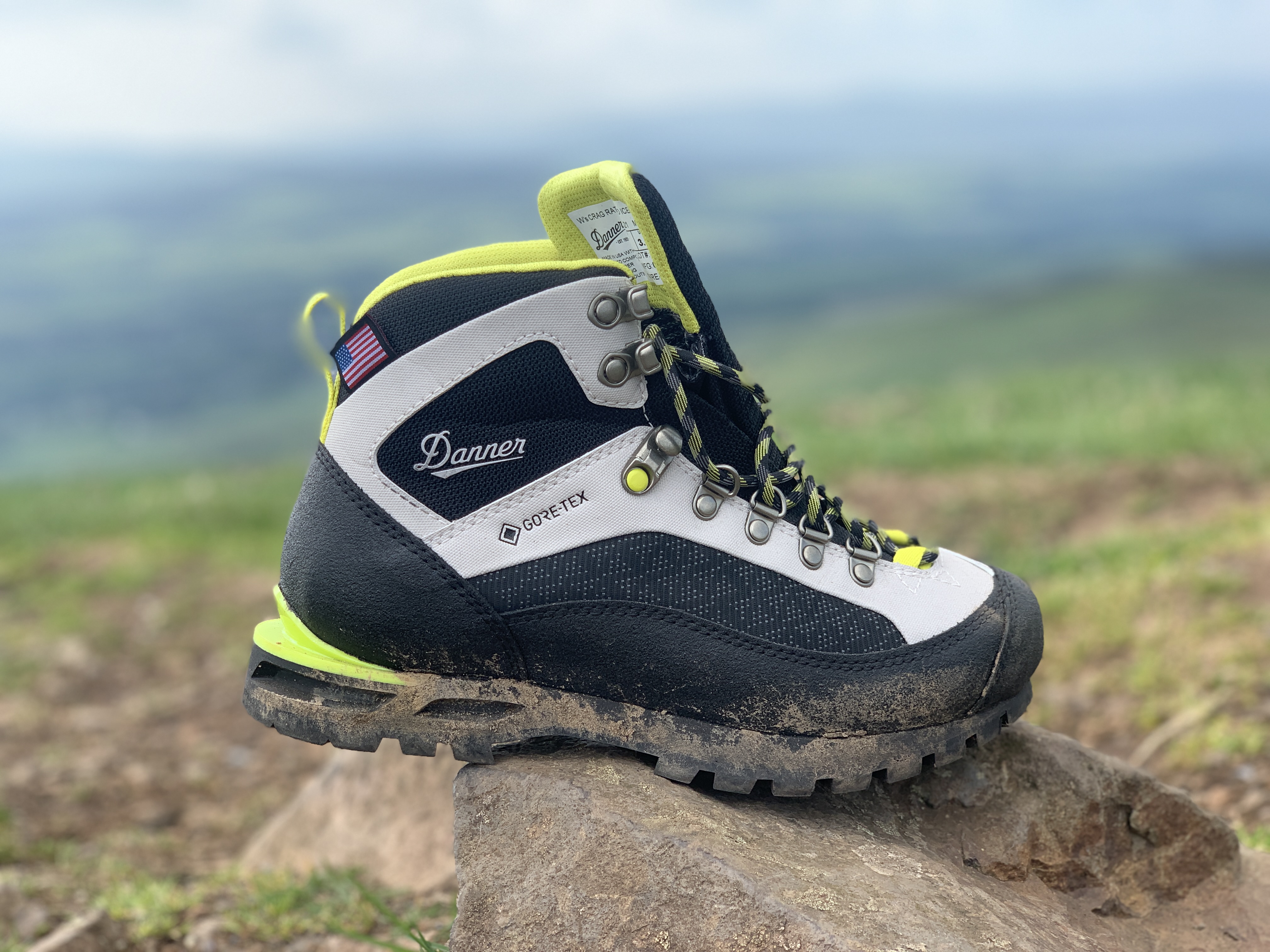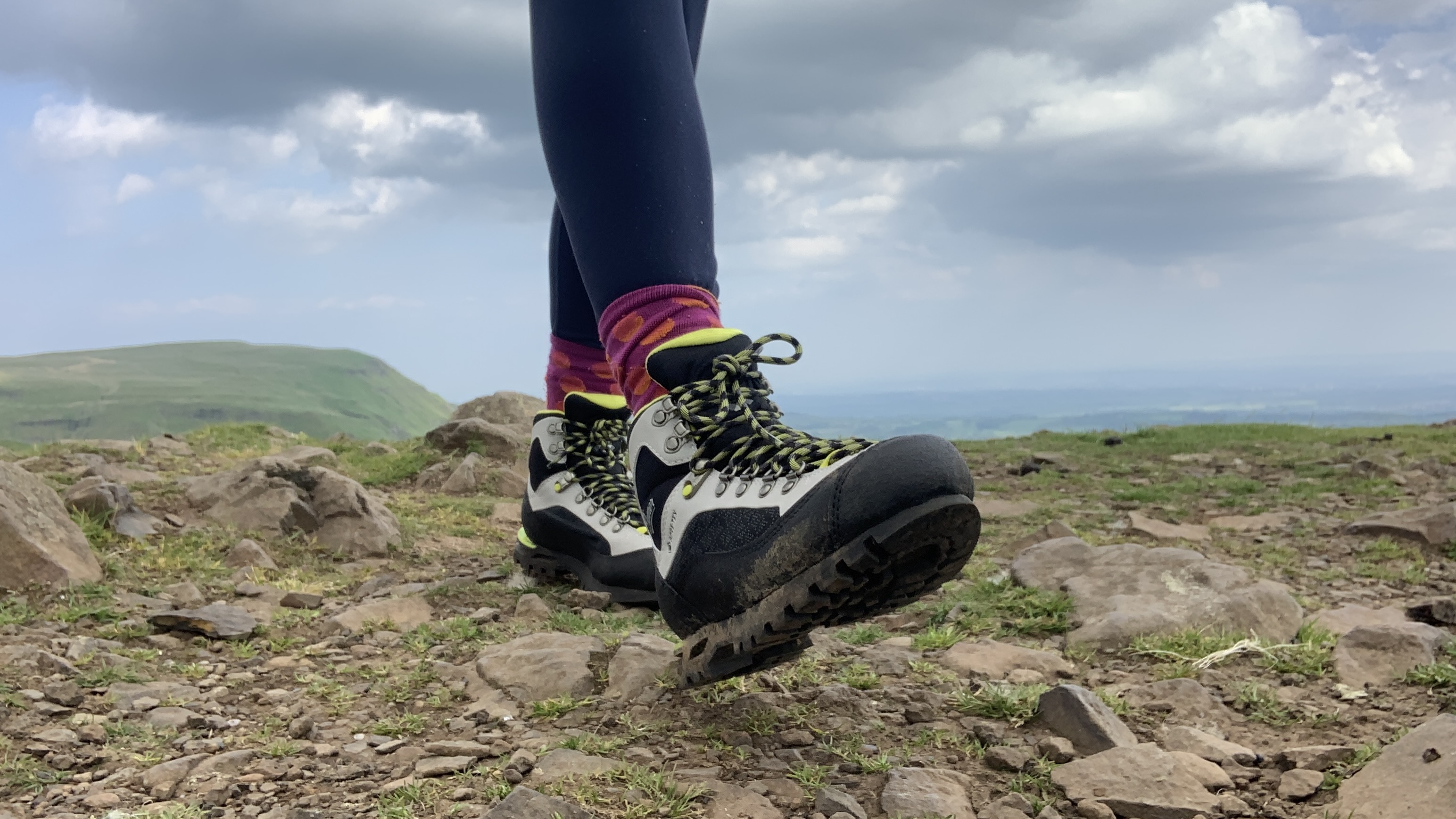Advnture Verdict
With excellent traction, protection and crampon compatability, these rugged boots are built for high alpine and winter pursuits where you want to be able to kick into the snow. With Gore-Tex liners, we found them a little warm in milder weather and think they are best saved for cold and wet conditions than rocky summer peaks, however, and the stiff soles can make steep grades a little tricky.
Pros
- +
Great traction and toe protection
- +
Waterproof
- +
Lightweight
- +
Versatile lacing system
- +
Crampon compatible
- +
Constructed in the US
Cons
- -
Expensive
- -
Very stiff soles
- -
Too warm for milder conditions
- -
Only one color available
You can trust Advnture
Meet the reviewer

Julia Clarke is a staff writer for Advnture.com and the author of the book Restorative Yoga for Beginners. She loves to explore mountains on foot, bike, skis and belay and then recover on the the yoga mat. Julia graduated with a degree in journalism in 2004 and spent eight years working as a radio presenter in Kansas City, Vermont, Boston and New York City before discovering the joys of the Rocky Mountains. She then detoured west to Colorado and enjoyed 11 years teaching yoga in Vail before returning to her hometown of Glasgow, Scotland in 2020 to focus on family and writing.
Danner Crag Rat EVO mountaineering boots: first impressions
When you're venturing into high alpine terrain or expect cold, snowy conditions, regular hiking boots don't always cut it, and you might be seeking extra protection. In these lightweight mountaineering boots, Danner has created a boot that delivers rugged protection in challenging conditions without adding much weight.
Synthetic leather uppers have a waterproof Gore-Tex lining to keep your feet warm and dry when you're wading through snow and though they're a little warm outside of winter, they let your feet breathe reasonably well.
If it's rough rock and kicking into snow you're planning on, the toe caps are made of Aerogel which is used by NASA to insulate space suits and is the world’s lightest solid comprised of more than 95 percent air. The soles are crampon-compatible for snowy days and the lacing system gives you lots of options for comfort and fit.
• List price: $380/ £370
• Gender specification: Men’s and women’s sizing available
• Sizes: Men’s 8 - 15 US, Women’s 5 - 11 US
• Weight (women's 6, per shoe): 17.2 oz / 490 g
• Materials: Synthetic Leather and Perspair Upper, PrimaLoft Aerogel Toe Cap, Removable OrthoLite Footbed, Vibram Mulaz Outsole, TPU mud guard
• Colors: Ice/yellow
• Best use: Mountaineering, winter hiking
Underfoot, 5 mm lugs on Vibram soles bite into any terrain and keep you from slipping even on steep slopes. However, the stiffness of the midsole, which does provide certain advantages in snow and on jagged rock, does mean that your feet might get a little tired when wearing these over a long day, and it makes it a little harder to climb and descend really steep slopes.
Unlike some Danner boots we've tested, these ones really don't take much breaking in, though doing so might help with the stiffness, and they definitely deliver the quality we've come to expect from the Oregon-based company. They don't seem to contain any recycled components, and they're not able to be recrafted like some other Danner boots, but we do like to see that they're made in the US.
Of course, they come with Danner's high price tag, which does make them off-limits for some, but if you're seeking an aggressive winter hiking boot without the weight, these are a worth a look.
Danner Crag Rat EVO mountaineering boots: in the field

I didn't quite get hold of these boots in time to take advantage of Scotland's fleeting winter, but instead I broke them in this spring on a few short hikes before getting them up a Munro recently to test out how they hold up in tougher terrain.
All the latest inspiration, tips and guides to help you plan your next Advnture!
Here’s how they performed:
Sizing, fit and comfort
I am a size 6 US but I usually go up a half size in hiking boots to allow my feet room to swell. However, I tested a 6 in these boots and was surprised to feel that they give my toes plenty of room to wiggle. In fact, I was a little sloppy about lacing them up at first and found my toes bashing into the ends when I started a steep descent. Obviously, you need to try them on to get the right fit, but I'd say these run a little large, which is no bad thing. The toe box isn't the widest, however, so give yourself a little extra room.
When I tested the Danner Mountain Pass boots, I had to break them in thoroughly and given how stiff these are, I was expecting to have to do the same again. However, I've actually been able to wear them without any rubbing. That said, the midsole is extremely stiff, and a bit more breaking in might be required. This is definitely done on purpose, to give your feet protection from rocky scrambles and help keep you stable in the slow, but I did find that it made walking up and down steep slopes a little uncomfortable as my feet really couldn't flex at all, and makes them less nimble than they're meant to be.

Waterproofing and temperature regulation
I had to test out the Gore-Tex liners in a stream due to a lack of snow, but they're watertight so long as you don't go over the ankle. This does mean that you lose some breathability, however I will note that while my feet got a bit warm wearing these on a warm day recently, they weren't overly sweaty and I think for cold weather I'd appreciate that.
Protection and traction
I was very impressed with the protection these boots offer from the NASA-approved Aerogel which was virtually bulletproof never mind boulder-proof on a recent scramble, and doesn't add bulk or weight. These are definitely the type of boots I can pick my way across a boulder field in quite confidently.
I was equally impressed with the traction. Though I wasn't able to test them on the snow or ice, I made sure to put them through their paces on steep, crumbly rock, mud, wet grass and slick granite and never lost my footing.

Durability and value
I'm definitely sold on Danner as a high-quality brand and though I'd be lying if I said I've tested these enough to say they'll last years, I can see that the construction appears really tough. Sadly, unlike some other Danner boots, however, they're not recraftable so when you do finally wear them out, they'll need to be replaced.
All that said, value is a very personal thing. Here, you're getting good quality, grip and protection, and for you, that might be worth forking out extra for.
Danner Crag Rat EVO mountaineering boots: the bottom line
These boots deliver the quality and craftmanship we've grown to expect from a Danner boot, and in this case, pack a lot of punch in terms of traction and stability into a surprisingly lightweight boot. They're not cheap, and they may be too stiff for some hikers. They're also best saved for winter conditions. For a cheaper boot that delivers good grip and protection without the price tag and stiffness, check out The North Face Verto Gore-Tex Alpine Mid Boots as a comparison.
Julia Clarke is a staff writer for Advnture.com and the author of the book Restorative Yoga for Beginners. She loves to explore mountains on foot, bike, skis and belay and then recover on the the yoga mat. Julia graduated with a degree in journalism in 2004 and spent eight years working as a radio presenter in Kansas City, Vermont, Boston and New York City before discovering the joys of the Rocky Mountains. She then detoured west to Colorado and enjoyed 11 years teaching yoga in Vail before returning to her hometown of Glasgow, Scotland in 2020 to focus on family and writing.


